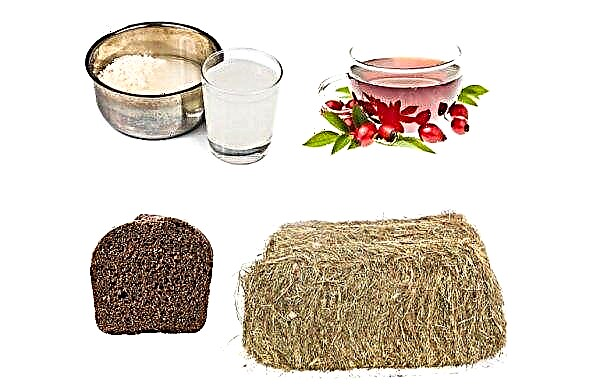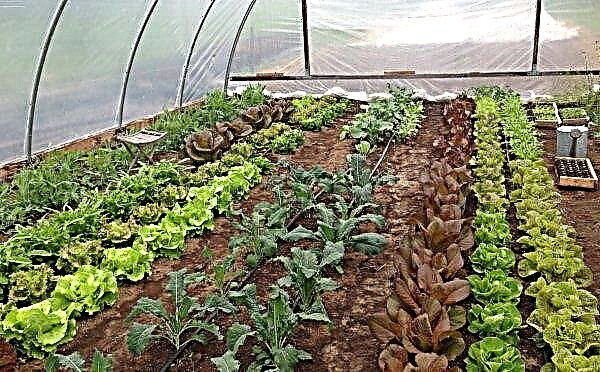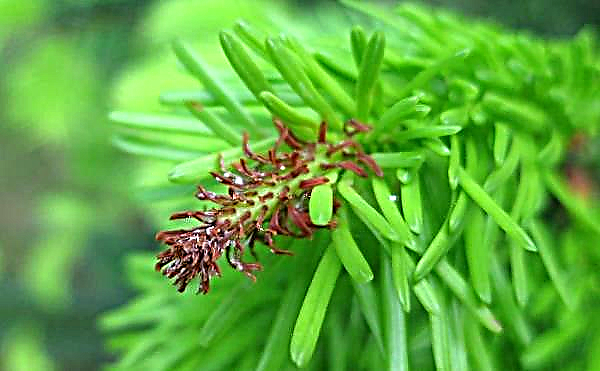A beautiful lush bush of saturated green color with an abundance of bright flowers of pink hues is a Bonica rose. The variety under consideration appeared later than many popular varieties, but quickly gained leadership among them due to its unpretentiousness and frost resistance. What you need to plant this flower and how to care for it, we will consider further.
Botanical description of the plant
The sprawling, thick bush of Bonica rose grows up to 60–150 cm in height and up to 120–185 cm in width. The intensity of its growth upwards depends on the climatic zone. Its shoots are small, arcuate. They are covered with dark green leathery foliage with a slight glossy sheen. Cup-shaped terry flowers of small size form brushes, up to 15 pieces in each.
Fresh flowers have a bright pink color. Over time, under the influence of the sun, it turns into a pale pink, almost white. Bonica rose can bloom repeatedly, only the second wave will be less violent, so the flowering period stretches from early summer to mid-autumn. When the flower withers, it must be cut to give the fruit a rich red color to form.
Planting seedlings in the open ground
The flower is distinguished by endurance, long flowering and frost resistance, so these points must be taken into account when choosing a place for planting.
The timing
Young bushes are planted in open ground in the spring. Soil pre-preparation is not necessary: just clean it from debris and dig it.
Did you know? Rosa Bonica belongs to Floribunda, and this class of roses is not peculiar to exude aroma. All flowers do not smell or exude a subtle apple flavor.
Seat selection
For a lush and long flowering period, the plant needs sunlight. Even light partial shade can lead to the cessation of flowering, so there should not be any buildings and plants around the rose bed that can give a shadow. In addition, the space should be open, since the flower does not like stagnant air: it provokes the appearance of black spots on the leaves.
The soil should be light and with low acidity, the fertile layer should be at least 0.6 m thick. A bush on loamy soil takes root well. But clay should not be too much, because it makes the soil heavier. To make it more loose, sand should be added. If there is a lot of sand, then it must be diluted with clay. Wet soil is categorically not suitable.
Important! In the absence of the opportunity to choose another soil to correct this will help the addition of sand, clay, turf soil and lime.
Step-by-step landing process
Before proceeding with planting, you need to choose the right seedling.
It is better to buy it in specialized stores, noting that it matches the following indicators:
- naked roots - such a bush is planted in autumn or spring;
- a sapling with three stems is the highest category, with two - the middle;
- root neck with a diameter of up to 100 mm;
- healthy and developed root system;
- the roots are in a container or with soil wrapped in paper or polyethylene.
Video: rose floribunda bonica
You can plant bushes in groups or alone.
This procedure is carried out as follows:
- If you plan a group landing, then you should adhere to the scheme 70 × 95 cm, if in a row, then with an interval of 65 cm.
- Pits are dug up several days before the planned landing and filled with water.
- Prepare the soil: mix the earth with compost and peat (1: 1), fertilizers for roses are added to them.
- Drainage is poured to the bottom of the pit, on top of it it is sprinkled with part of the prepared earth. Sandy soil does not need drainage.
- The seedling is carefully inspected for damaged roots. If their length is more than 0.3 m, then the roots need to be cut. The purchased seedling in the container is carefully removed with the soil. Its shoots are clipped, the three strongest are left, and they are clipped so that three buds remain.
- The finished bush is lowered into the hole. Its root system is straightened and sprinkled on top of the soil. The soil is tamped, and at this time the seedling is slightly lifted up so that the earth can fill all the voids. If the seedling has a vaccination, then it should be deepened by 50 mm.
- The bush is spudded and watered abundantly.
Did you know? In 2003, Bonica rose was awarded as «The most beloved rose in the world».
Care Tips
Bonica is unpretentious, so taking care of it does not take much time.
Watering
Roses are very moisture-loving: for normal growth, they need to receive 10 liters every week. With the advent of buds and the beginning of flowering, the norm needs to be slightly increased, and if the summer is hot and dry, the frequency of watering also increases (2 times in 7 days). In autumn, it is enough to pour 5 liters under the bush.
It is best to irrigate flowers before dinner. It is advisable to use water that has been protected. It is better to defend it in the fresh air so that it acquires an ambient temperature. Moisture is pouring under the root - the leaves should not get wet. To prevent water from spreading, a hole is formed around the bush.

Fertilizer application
Bonica is fertilized according to a certain scheme:
- the first fertilizing after pruning a bush in early spring;
- second - in the summer, before the buds open;
- the third - at the end of summer, potash fertilizers are used to strengthen.
Loosening and weed control
The soil needs loosening after each irrigation, so that a crust does not form on its surface, which will interfere with air exchange. It is necessary to fluff up a layer about 100 mm thick. Weeds are removed as they appear.
To less often fight weeds and spend less time on loosening the soil, the earth around the bush can be mulched. Mulch will help preserve moisture in the soil and protect the roots from pests. For mulching, you can use organic matter: peat, hay, dry foliage, sawdust, fermented manure.

Pruning
To maintain the shape and density of the bush, it must be regularly trimmed. This action must be performed with the advent of spring every year. Pruning can be strong and medium. The first option allows you to delay the beginning of flowering, and the second - to accelerate, and in addition to this will contribute to the uniform development of shoots. Middle pruning involves the removal of 4-6 eyes.
There is also pruning aimed at rejuvenating the plant. Spend her in the fall.
Important! When carrying out any of the scraps, it is necessary to remove dry, frozen, injured or growing shoots in the wrong direction.
Shelter for the winter
Although Bonica rose is frost-resistant (according to some reports, it can survive a drop in temperature to –30 ° C), it must be prepared for wintering. This procedure will allow the plant to recover faster after a cold period.
You need to start by pruning the buds, then shorten the shoots and cut off the entire foliage for the remaining length. The bush should be abundantly watered (30 l), and then well spud. Shoots are pressed to the ground and covered with oak leaves. Non-woven fabric is laid on top. The procedure is carried out after the end of the last wave of flowering.
You got acquainted with the features of growing Bonica roses. Such a flower will become a real decoration of the site: with it you can form flower beds, borders, hedges.












